|
|
HOME |
|
|
AVAILABLE KITTENS |
|
|
HEALTH AND CARE |
|
|
KITTEN DEVELOPMENT |
|
|
ADOPTED KITTENS PICTURES |
|
|
OUR CATS PICTURES |
|
|
BURMESE BREED HISTORY |
|
|
UNDERSTANDING DECLAWING |
|
|
GENES AND MATING TABLES |
|
|
FEEDING NEWBORNS |
|
|
GUEST BOOK |

![]()
![]()
TYPES OF BURMESE CATS
![]()
There are TWO DIFFERENT Burmese breeds recognized by CFA - BURMESE AND EUROPEAN BURMESE.
CFA Burmese breed include cats from Contemporary and Traditional Burmese blood lines.
There is only one Burmese breed in TICA which includes all types of Burmese.
![]()
BURMESE COLORS EXAMPLES:
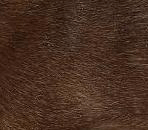 |
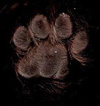 |
SABLE/BROWN: the mature specimen is a rich, warm, sable brown; shading almost imperceptibly to a slightly lighter hue on the underparts but otherwise without shadings, barring, or markings of any kind. (Kittens are often lighter in color.) Nose leather and paw pads: brown. Eye color: ranges from gold to yellow, the greater the depth and brilliance the better. |
 |
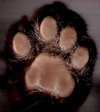 |
CHAMPAGNE/CHOCOLATE: the mature specimen should be a warm honey beige, shading to a pale gold tan underside. Slight darkening on ears and face permissible but lesser shading preferred. A slight darkening in older specimens allowed, the emphasis being on evenness of color. Nose leather: light warm brown. Paw pads: warm pinkish tan. Eye color: ranging from yellow to gold, the greater the depth and brilliance the better. |
 |
 |
BLUE: the mature specimen should be a medium blue with warm fawn undertones, shading almost imperceptibly to a slightly lighter hue on the underparts, but otherwise without shadings, barring or markings of any kind. Nose leather and paw pads: slate gray. Paw pads: ranging from slate gray to warm pinkish blue. Eye color: ranging from yellow to gold, the greater the depth and brilliance the better. |
 |
 |
PLATINUM/LILAC: the mature specimen should be a pale, silvery gray with pale fawn undertones, shading almost imperceptibly to a slightly lighter hue on the underparts, but otherwise without shadings, barring or markings of any kind. Nose leather and paw pads: lavender-pink. Eye color: ranging from yellow to gold, the greater the depth and brilliance the better. |
 |
RED: light, golden apricot with melon-orange overtones | |
 |
 |
CREAM: warm deep cream with hints of apricot |
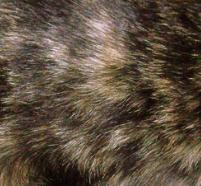 |
BROWN TORTOISESHELL: soft mingling of red or cream with sable | |
 |
 |
BLUE TORTOISESHELL: soft mingling of red or cream with blue |
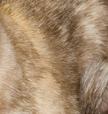 |
CHOCOLATE TORTOISESHELL: soft mingling of red or cream with chocolate | |
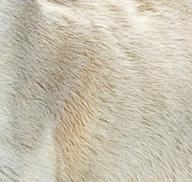 |
LILAC TORTOISESHELL: soft mingling of red or cream with lilac |
CFA BURMESE STANDARDS
The overall impression of the ideal Burmese would be a cat of medium size with substantial bone structure, good muscular development and a surprising weight for its size. This together with a rounded head, expressive eyes and a sweet expression presents a totally distinctive cat which is comparable to no other breed. Perfect physical condition, with excellent muscle tone. There should be no evidence of obesity, paunchiness, weakness, or apathy. Colors: sable, champagne. blue and platinum.
CFA EUROPEAN BURMESE GENERAL STANDARDS
The European Burmese is a cat breed of far eastern origin, moderate type with gently rounded contours. The coat shades gradually to the roots, with no smoke effect or ticking. Body underparts are slightly paler than the back. The points may show some contrast. Kittens and adolescents may have faint tabby markings and a lighter color. Non-red/cream adults should have no tabby markings. European Burmese colors recognized by CFA are: brown, blue, chocolate, lilac, red, cream, tortoiseshells.
( standards - CFA official web-site www.cfa.org)
EUROPEAN BURMESE VS. BURMESE
The biggest difference between Burmese and European Burmese is that European Burmese have a red gene, and additional cream, red, and tortoiseshell colors. The colors of the eyes of European Burmese are gold to dark amber. Eyes of Burmese are gold. There is also difference in the appearance of these cats. European Burmese are more slender and oriental looking than Burmese. Burmese are very round in shape of the body, head and eyes. The European Burmese eyes should be slightly curved with a slant toward the nose.
TRADITIONAL BURMESE VS. CONTAMPORARY BURMESE
The Contemporary Burmese has shorter noses, muzzles and deeper nose break than Traditional Burmese. The controversy between Traditional and Contemporary Burmese blood lines stems around the fact that Contemporary Burmese blood lines carry a lethal HD, head defect. Contemporary cats with concave profile were very successful in show halls. This success made contemporary cats more desirable and defective gene was spread. Traditional blood lines are free of HD defect. As the breed progresses the difference in appearance between Traditional and Contemporary Burmese is fading, but gene pools, blood lines, are different.
TICA BURMESE STANDARDS
Burmese come in a range of solid and tortoiseshell colors: rich, dark
sable brown; a medium, warm blue; a warm, honey beige chocolate with
pink or fawn tints; a lovely lilac that ranges in tone from a bright
pinkish grey to a silvery platinum with pink tints; reds of a light,
golden apricot with melon-orange overtones; rich, warm deep creams with
hints of apricot; and the soft mingling of red or cream with sable,
chocolate, blue or lilac found in the tortoiseshells. All with seductive
gold eyes glowing with their love for you. In young cats, the points
will be darker but as the cat gets older and the coat matures the body
color becomes deeper and richer until there is only a very slight
difference between it and the color on the legs, head and tail.
The Burmese is a medium-sized, compact cat with a strong, well-muscled
body making it surprisingly heavy for its size. It has a short, silky,
single coat that hugs the muscular body and is a joy to stroke. The
Burmese is a sturdy cat like a little bulldog with females being smaller
than the males. The head is rounded and its large, innocent-looking gold
eyes give it a sweet expression.